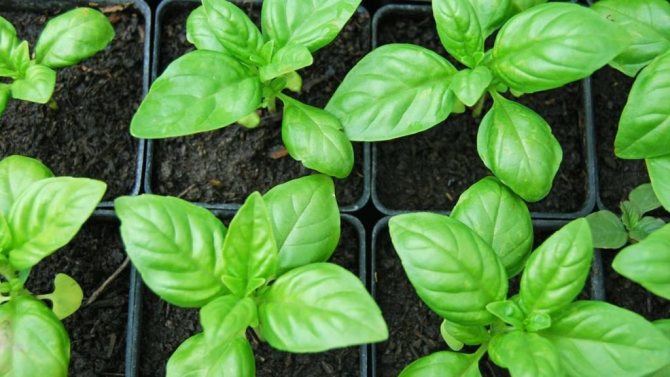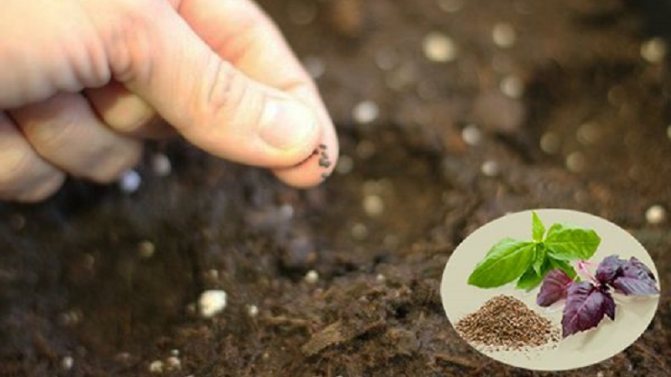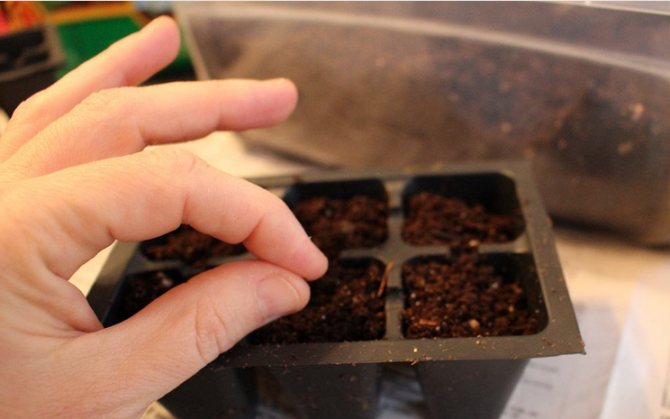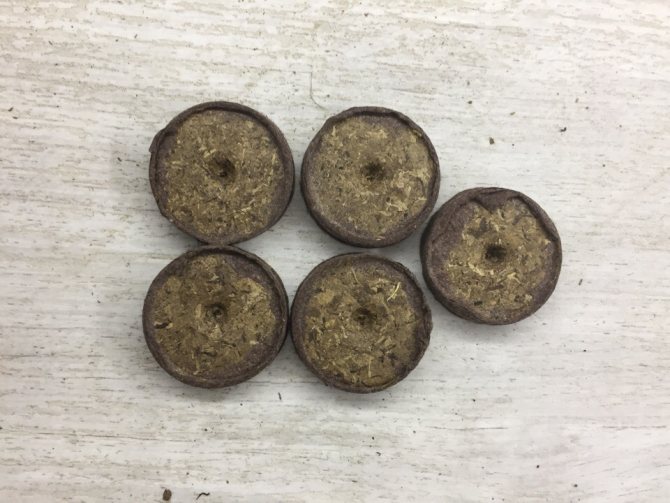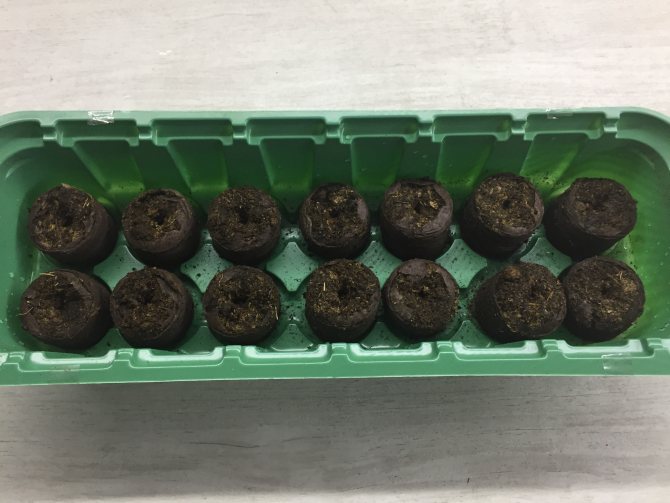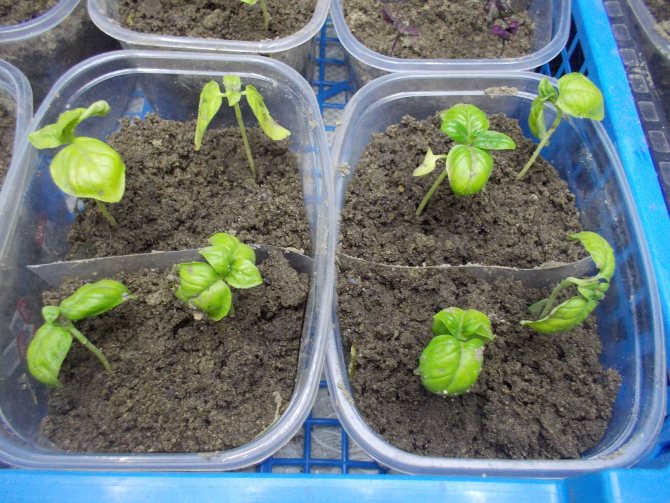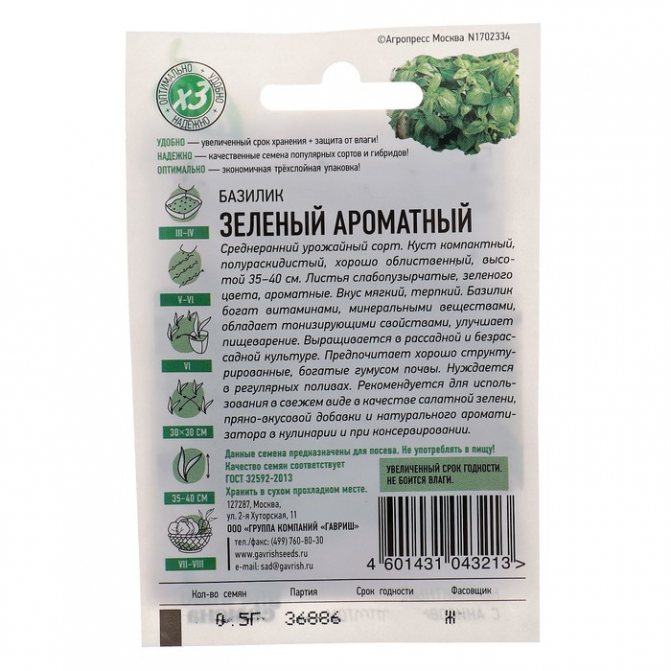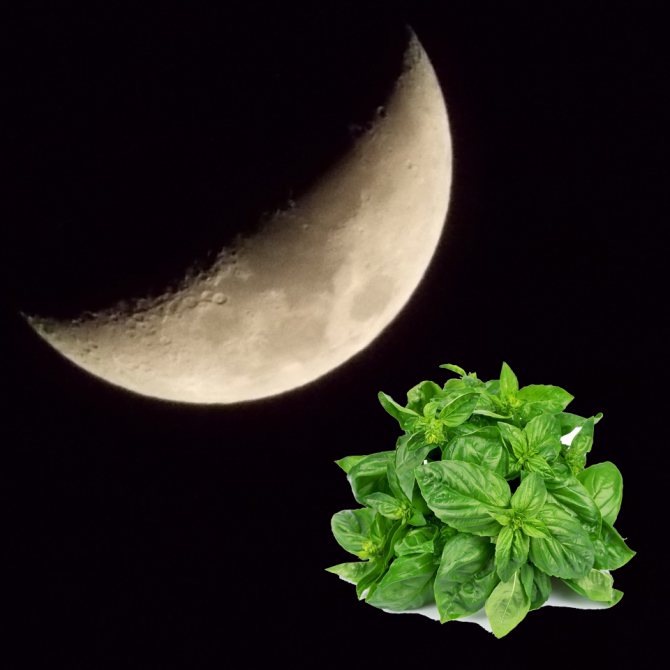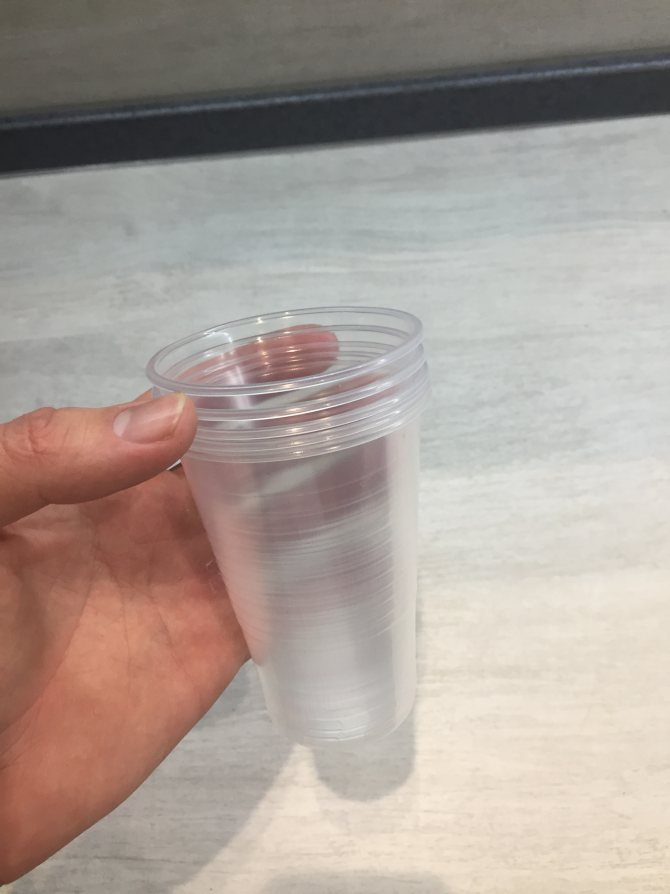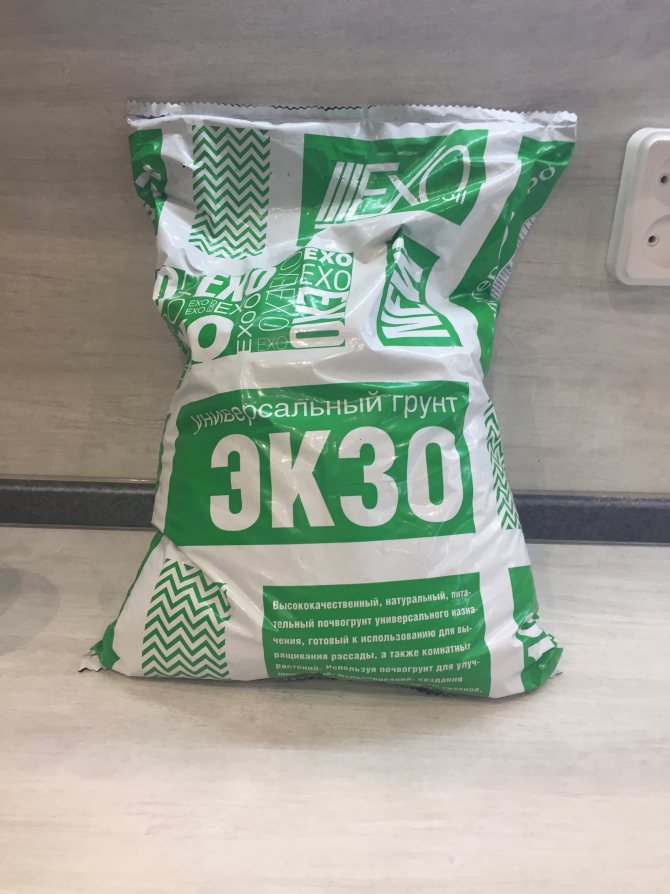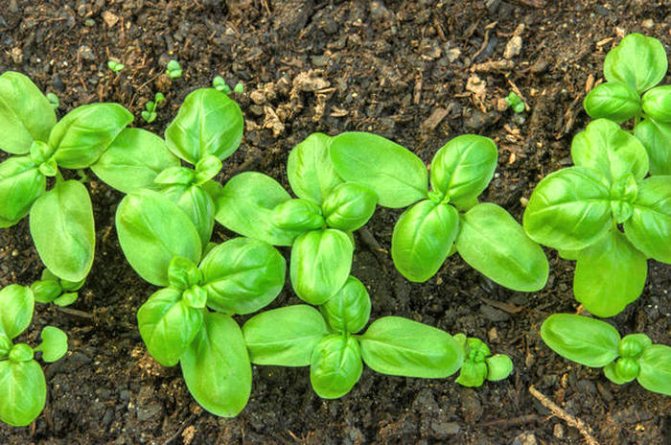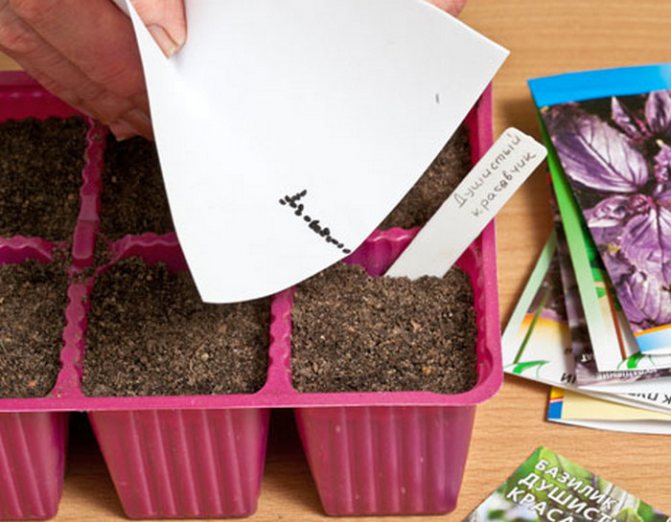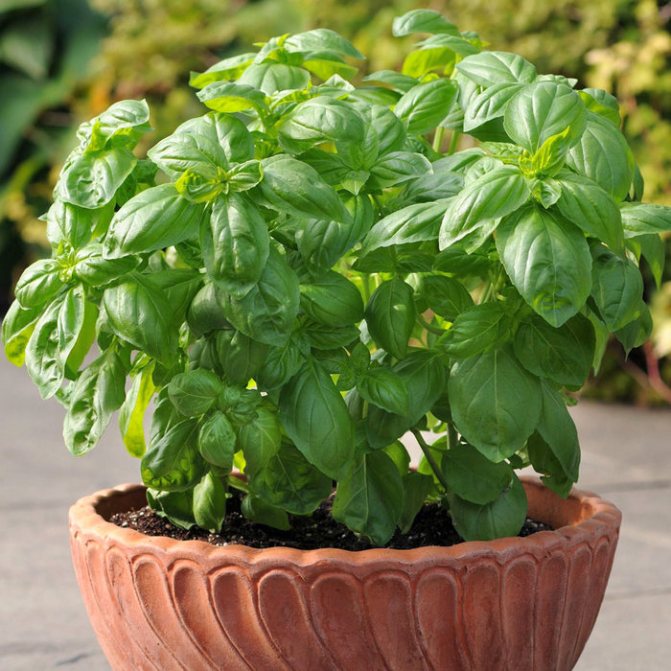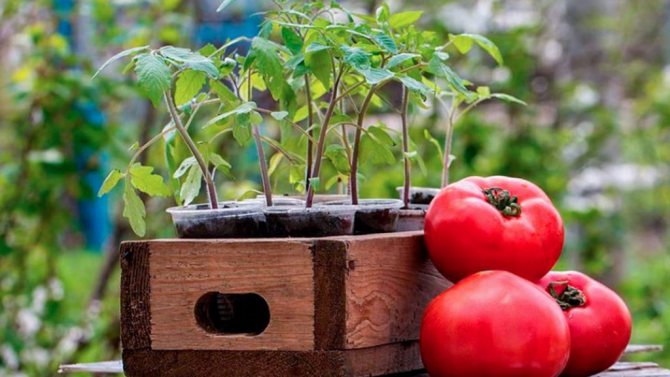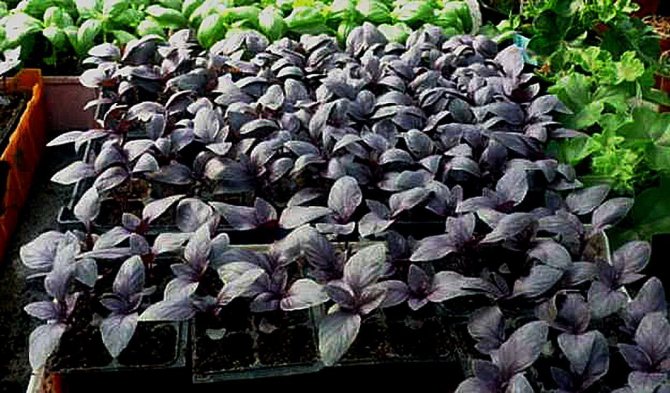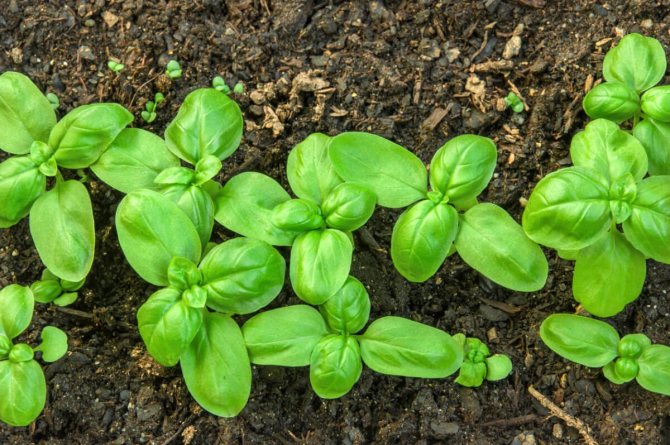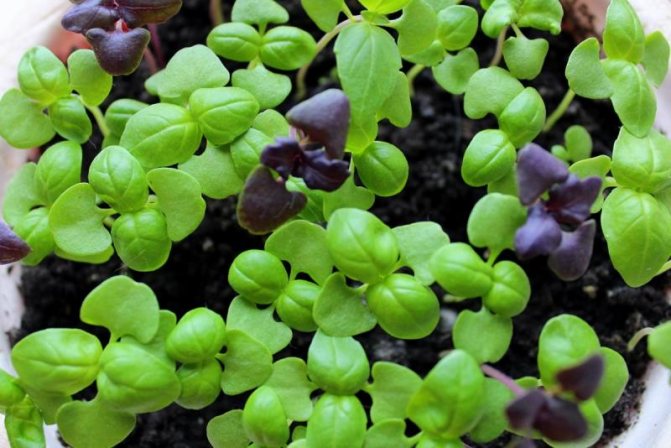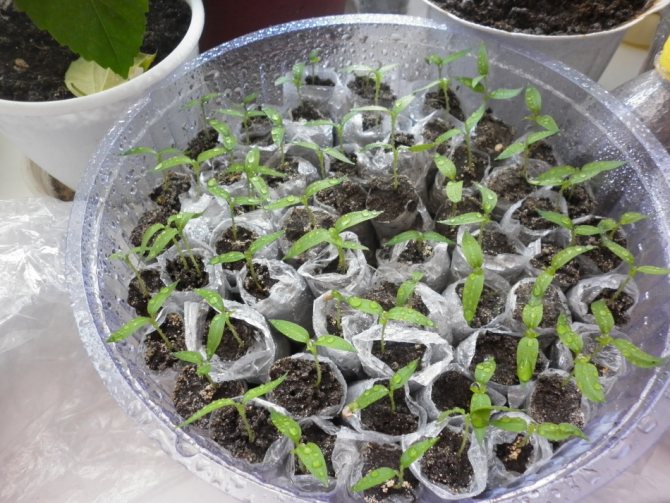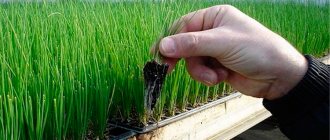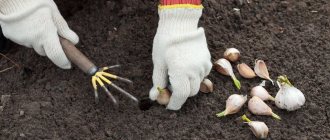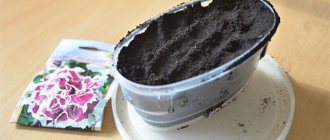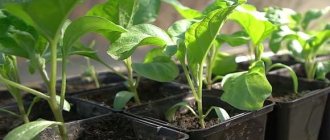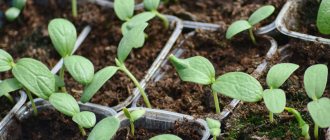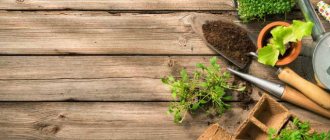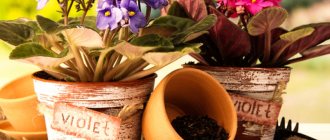Growing basil from seeds on your own makes sense if you plant a crop not only for your own consumption, but also for sale. The average family needs only a few bushes to provide themselves with fresh, dried spices and medicinal raw materials. They are easier to buy in the market.
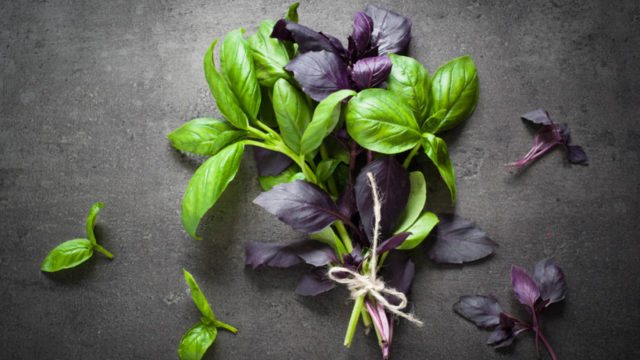
But there they usually sell several varieties, and often the sellers themselves do not know which ones, but divide them by color: red and green basil. If gardeners or designers want to grow a specific or exotic variety, you will have to tinker with the seeds. There is nothing difficult in this, especially if there is a minimum skill of picking - you cannot do without it.
When to plant basil
Sowing basil is carried out, focusing on the fact that the culture is very thermophilic. The slightest decrease in temperature will lead to a halt in development, and even a short-term frost will surely destroy the plant.
When to sow basil seedlings
In most regions of Russia, basil is grown only through seedlings. Depending on climatic conditions, planting seeds is carried out from mid-March to the end of April. This period is quite extended, but most gardeners who grow basil for their own needs only carry out one harvest. Of course, not counting the preparation of pickles and salads with fresh leaves.
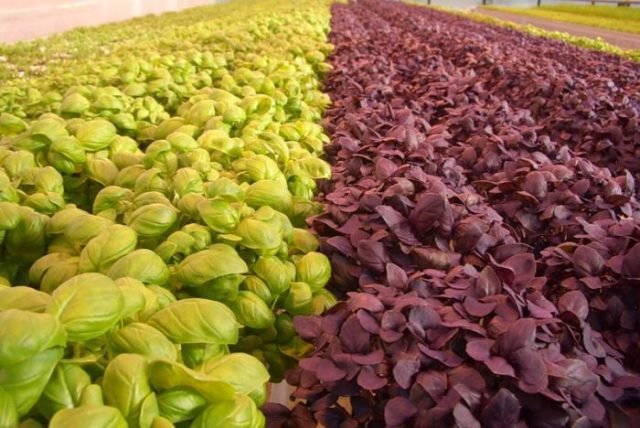

When sown early, basil will quickly gain green mass and allow you to harvest the green mass several times. In the northern ones, the seedlings will outgrow, but they will take root well, even if they are not planted in peat cups.
Sowing basil late, it will still yield several harvests in the southern regions. In the central ones it will be possible to make 1-2 cuts. In the north, the crop will probably yield one crop, but basil is needed for own consumption very little. By and large, an average family can get by for a whole season by being able to give one bush.
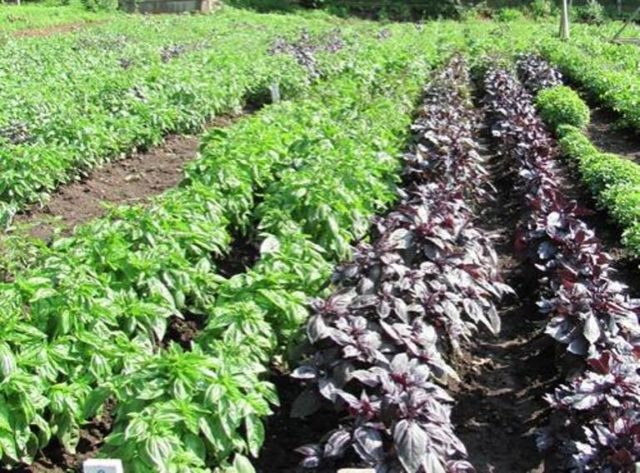

When to plant basil seeds outdoors
As a thermophilic culture, basil cannot be sown into the ground before the threat of frost has passed. Russia is a very large country, warm weather is uneven. In the northern regions, planting basil outdoors with seeds just doesn't make sense. What's the use of waiting until the soil warms up enough to be able to sow - so you may not get a crop. In the south and in the center, basil is sown in open ground at the same time as cucumbers.
The term is determined by weather conditions. Before planting the seeds, the ground should warm up well to a depth of 10 cm. If the soil temperature is below 10 ° C, the basil simply will not germinate. Seeds are usually planted from late May to early June. Later, the heat can destroy tender seedlings.
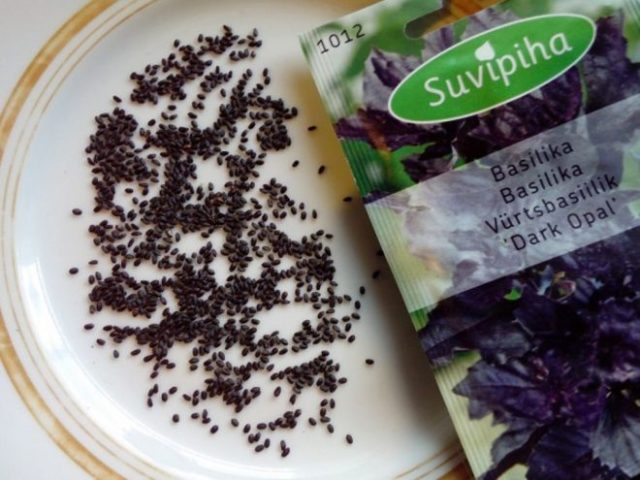

Summing up
To summarize and summarize this article, the following conclusions can be highlighted:
- Any work related to planting seeds should be performed based on the lunar calendar. This way you can achieve maximum germination.
- In addition to the lunar calendar, you need to take into account the climatic conditions of your region to determine when to land.
- In addition to the recommendations of astrologers, basil must be properly looked after. Only with an integrated approach can you get an excellent harvest of greens.
How to plant basil seedlings
If the gardener is familiar with the basics of diving seedlings, he will easily grow basil. This crop requires minimal maintenance, not only in the open field after planting, but also in the initial phases of development.
Preparing a container for planting
For sowing seeds, it is best to use special seedling trays, which are readily available and inexpensive. Rinse them thoroughly before use. If they were stored in unsuitable conditions or for some reason have not been cleared from the ground since last year, the cassettes are first washed clean, then soaked in potassium permanganate, rinsed and filled with soil.
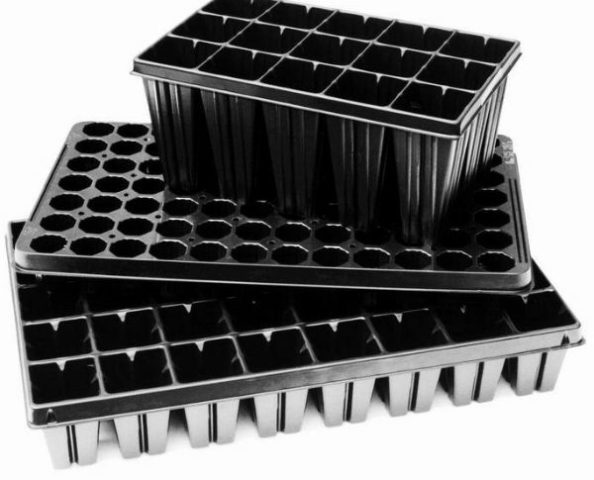

Many gardeners are accustomed to using standard 8x30x60 cm planting boxes or other shallow dishes with bottom holes. We should dwell on their preparation in more detail.
Seedling boxes are washed, if necessary, disinfected with potassium permanganate, scalded with boiling water, dried. Then they are installed in a warm, well-lit place and filled with planting mixture. To do this, it is better to take ordinary purchased soil for seedlings.
The most common mistake when preparing a planting box is that gardeners are trying to cram drainage in there. Of course, if the seedlings are sown in an ordinary flower pot or other unsuitable dish, a layer of expanded clay or gravel must be made. But in planting boxes, it is not only not needed, but it can also cause low germination of seeds - under the influence of water, the soil will sag and they will simply fall through.
How to properly fill the seedling container with soil
Not everyone knows how to properly stuff seedling boxes, but any mistake will lead to lunges, black leg. You can even ruin crops.


The sequence for filling the seedling container correctly:
- The landing box is immediately installed in a permanent place. It should be taken into account that water for irrigation will spill through the lower holes and lay an oilcloth or provide a pallet.
- Sift the substrate before laying. Then they fill 2/3 of the box and tamp it tightly using your hands and any heavy object. Particular attention is paid to the perimeter. Using your fingers, applying force, the soil is pressed, poured and pressed again so that there is not a single badly trampled place between the edges of the box and the substrate. The surface is leveled with an impromptu iron such as a trowel.
Filling the planting box with substrate will take longer than you might think. This procedure is not easy even for experienced gardeners, but it must be done carefully - the quality of the seedlings directly depends on this.
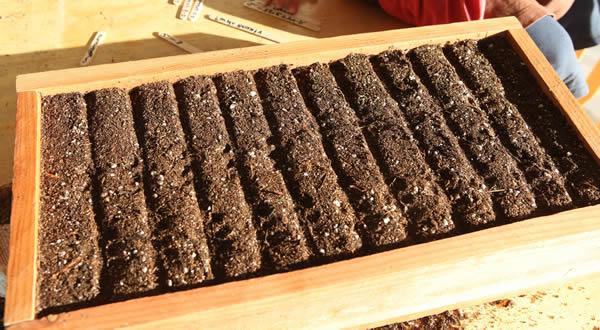

It is best to prepare the box just before sowing the seeds. If something distracts, or the work has to be postponed, you should wrap the container with cellophane so that the substrate does not dry out.
Seed preparation
Basil seeds are buried dry. A variety of tips to soak them before planting to destroy the shell only adds to the worries. Swollen basil seeds are covered with a slippery shell that is difficult to handle. It is impossible to sow them evenly. In addition, soaking the seeds of this crop will not accelerate their germination. It's easy to check if you want.
Basil seeds are usually sold packaged up to 0.5 g. And this is a lot - 1 g contains 600-900 pieces, it all depends on the variety, and their size is not so small.
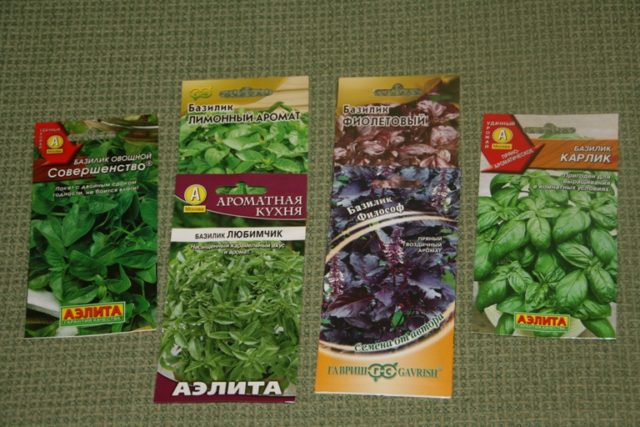

How to sow basil seedlings
Sowing basil seeds for seedlings in cassettes is very simple. The video will tell you the best about it:
In boxes that are more familiar to the older generation, you can also grow high-quality seedlings. The downside here is the need for a pick. Not everyone loves it and can do it correctly without destroying half of the sprouts along the way. And basil is not a tomato, damage to the root system, which cannot be avoided when picking, is not beneficial to this culture.It will take time to recover and resume growth processes.
The advantages of growing seedlings in boxes include:
- significant space savings;
- easier to water;
- boxes are more durable than cassettes;
- it is easier to move them if necessary.
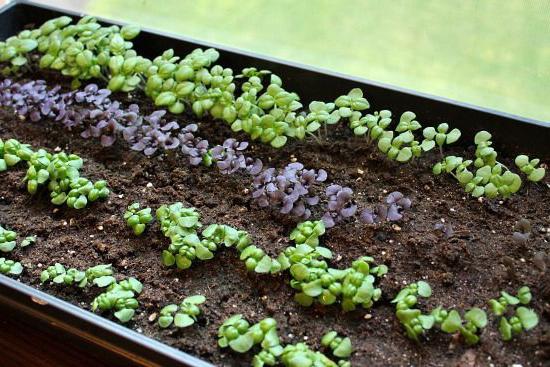

Furrows 5 mm deep are made along one wall of the seedling box at a distance of 5 cm from each other, they are spilled with warm water and seeds are rarely sown. Then they are covered with soil, sprinkled abundantly from a household spray bottle, covered with glass or film.
When sowing dry basil seeds at a temperature of 20-24⁰C, the first shoots will appear in 10-14 days, if it is increased to 25-28⁰C - after 7-10 days. Keeping in a cool (below 20⁰) room does not make sense.


Every day, the planting needs to be ventilated, removing the shelter and checking the moisture content of the soil. If necessary, the soil should be scoured with a spray bottle. It should not be wet in any case.
How to plant basil seeds outdoors
In the northern regions, sowing basil in the ground does not make sense at all. If you wait for the soil to warm up in Central Russia, you can bring a crop grown in a seedless way to the stage where you can cut off shoots for drying only in warm summer. Otherwise, it will not pick up enough essential oils, and will only be suitable for freezing or fresh consumption. In the south, the soil warms up quickly, the seeds germinate well, just the first cut of the basil grown through seedlings is carried out much earlier than when sowing directly to the garden.
Landing site preparation
Before sowing seeds, the ground must be dug up at least half the bayonet of a shovel. If the basil will later be planted (which is preferable), sand is added beforehand. Heavy soils are not suitable for planting seeds. They need to be improved by adding additional lowland or transitional peat.
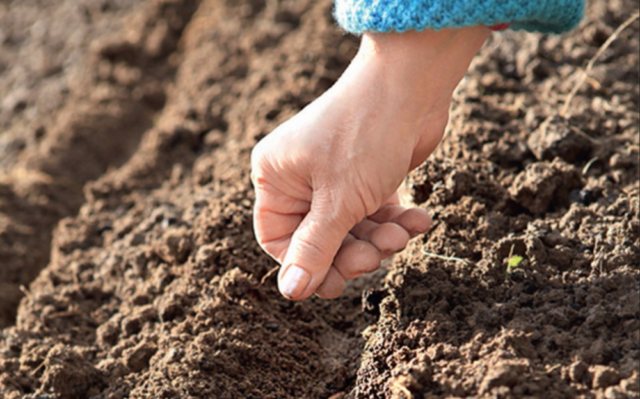

The site is freed from stones, weed roots, dug up, leveled, and allowed to settle for at least 2 weeks. Basil seeds, of course, are not the smallest ones, but if this is not done, they will easily fall through and "get lost." Because of this, the shoots will appear later, and there will be few of them - some shoots will not be able to break through. In addition, the upper layers of the soil warm up much better.
You cannot sow basil where spicy-aromatic herbs have already grown. They release substances into the soil that not only repel pests, but also inhibit their own growth.
Seed preparation
Basil seeds do not need to be cooked before planting in the soil. Soaking does not accelerate germination. In addition, it is almost impossible to evenly distribute slimy swollen balls in the soil.
Basil seed sowing rules
Basil seeds begin to germinate at a temperature of 15-16 ° C. But it must be borne in mind that in the soil in the spring it is much lower than the street thermometer shows. Basil is sown when the ground has warmed up well, and its temperature has become almost the same as the air. This happens quite late - around the end of May, and for some regions - not earlier than June.
On the garden bed with a glanders, a flat cutter, or another tool, shallow (about 1 cm) rows are drawn every 15 cm, they are watered with warm water and basil is rarely sown. It is not difficult to distribute the seeds correctly - they are quite large. Consumption rate - 0.5-0.6 g per 1 sq. m.
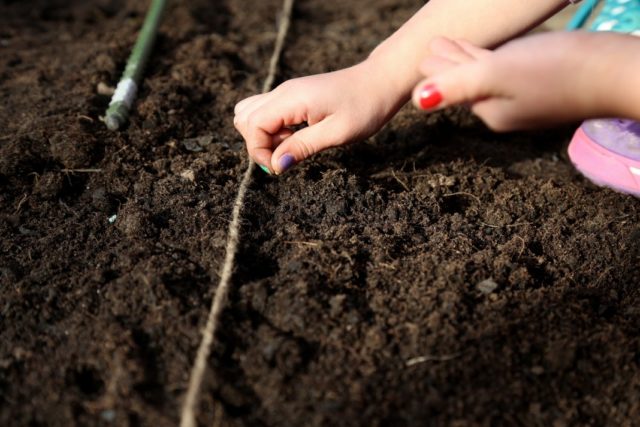

Then the bed is carefully leveled with a rake. Do not water. Basil seeds will receive enough moisture - after all, the rows have been pre-saturated with water.
Care after landing
Immediately after planting, the bed is covered with a film - this will retain moisture and accelerate the germination of the basil. After the first sprout has appeared, they begin to lift the cellophane during the day to ventilate and moisturize the seedlings. Watering should be done with warm water.
It is very useful to spray seedlings once a week, alternating preparations, with zircon and epin - this will make them more resistant to adverse factors, for example, overflows or temperature extremes. By the way, the worst thing that can be done with basil at the initial stages of development is not to forget to cover it at night, but to waterlogged the soil.
When two real leaves appear and fully take shape, the crops can be fed with urea, diluting it 2 times more than recommended by the instructions, or with special fertilizers for seedlings.
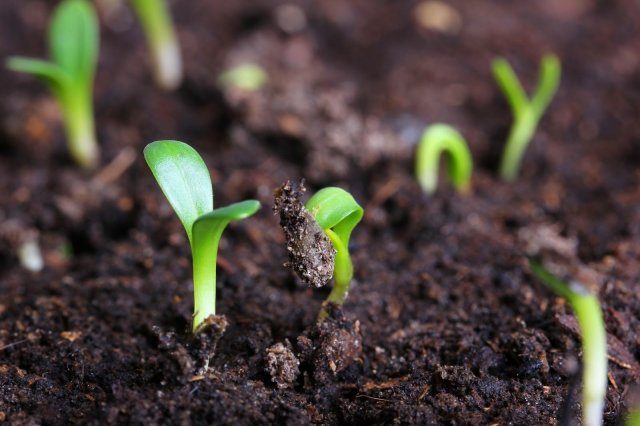

At this time, watering, weeding is carried out, the soil is loosened 1-2 times a week. 10-14 days after the first feeding, the second is given, using a complex fertilizer diluted in half.
It will be possible to plant basil about 25 days after pecking the seedlings.
Growing stages
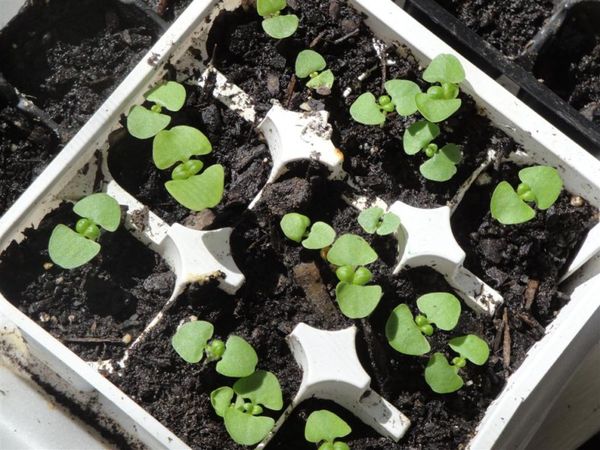

To get a rich harvest, you need to follow all the rules for preparing seedlings. First you need to select a variety and purchase seeds. They can be collected independently from friends in the garden or from an existing garden. This is done in three steps:
- Large testes are determined on the bushes.
- Inflorescences with peduncles must be carefully cut using sharp scissors or secateurs.
- The collected material is dried, after which the small bones are separated from the flowers.
Seed preparation
There are several ways to increase the germination rate of basil. Under natural conditions, spicy grass grows in weather not lower than + 28 °, so preparing seeds for planting by heating is one of the most effective ways. The seed is activated at temperatures between + 35 ° and + 40 °. For this treatment, the seeds must be laid out on paper and placed under the sun. In March, outside the temperature does not allow basil to warm up in this way, so the procedure can be carried out using the oven. There, the seeds need to be warmed up for 2-3 hours.
The germination of the herb is increased by soaking. Seeds swollen in water germinate quickly. For the procedure, you will need a shallow container and warm water. Bio-growth stimulants, such as succinic acid or Zircon, can be added to it. Such processing can be done immediately after warming up. So the germination rate will increase to almost 100%. If the seeds are in cloth, cotton pads or gauze, they can be soaked in the same material.
Soil preparation
You need to plant basil in shallow holes at a distance of about 17 cm. Making seedlings of this scale is problematic, so it is better to place the seeds in separate containers or use snails. So the root systems of several plants will not interfere with each other. The soil must be nutritious, otherwise the leaves will not be saturated with essential oils. A universal soil is suitable, into which you can additionally add peat and compost.
Attention! The main thing is that the earth remains warm. Basil roots cannot stand the cold.
Sowing seeds
First you need to choose a suitable container. Small peat pots can be used. Such containers do not require picking: basil is placed in open ground directly in a container made of natural material. If there is no way to place seedlings in separate containers, one large box will do. It is necessary to fill in the drainage, then the soil. Holes are made in the ground at a depth of about 1 cm. Then the soil must be moistened with a spray bottle. For the first time, the container can be closed with polyethylene to create a greenhouse effect. When the first shoots appear, the greenhouse must be removed, otherwise the plant in the future will get used to a cooler temperature for a long time.
Care after landing
The basil container is best placed on the east or west window. The plant is not afraid of direct sunlight, but if the weather is too hot, it can get burned. On such days, the seedlings need to be rearranged in the shade, because the glass will work as a lens. At the same time, the room temperature should not fall below + 20 ° and rise above + 28 °. With proper care, the sprouts will appear within 7 days.
How to plant basil in open ground with seedlings
When not only the air, but also the soil on the site warms up, you can plant basil seedlings. Overgrown bushes will take root more slowly than short unbranched tails, and over time they will almost equal them in development.
Seedling preparation
7 days before planting, the temperature of the seedlings is lowered to 15-17⁰ C during the day, and the temperature at night - to 12-15⁰, and watering is reduced. If the weather is warm, calm, basil is taken out for several hours in the yard. This is called seedling hardening. It is necessary so that after moving into the ground, the plant does not receive a shock, but quickly takes root and grows, spending less time on adaptation.
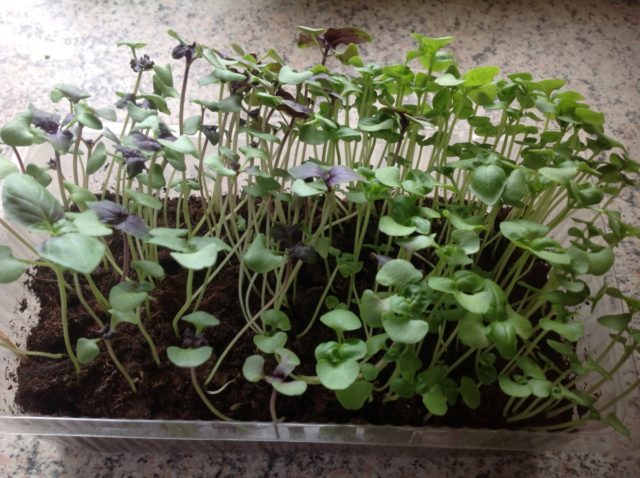

On the eve of planting, the seedlings are watered, but not abundantly, but so as to only moisten the earthen lump.
Soil preparation
The land for planting basil is prepared in the same way as for sowing seeds - it is loosened, weed roots are removed and leveled. For digging on good black soil, you can not add anything. If you need to get a large yield of green mass, 0.5 buckets of humus, a glass of ash are introduced for each square meter, and sand, transitional or low-lying (black) peat are introduced into dense soil.
After digging, the soil is allowed to settle for at least 2 weeks. But what to do when this time, for some reason, is not there? Then, after loosening, the bed is watered, and if a hose is used, they try to spray the stream as much as possible, and the next day they start planting.
How to plant basil seedlings
A shallow hole should be dug under each bush, filled with water. Then remove the basil from the pot or cassette, place it in the center, cover the root and 1-2 cm of the stem with soil. Squeeze the soil with your hands and water.


If the seedlings were grown in a peat cup, you do not need to remove it. When picking is carried out not in separate containers, but in planting boxes, basil grows in rows close to each other. The question arises of how to remove it, minimally damaging the roots. Experience has shown that it is better to take out such seedlings with a spoon - a tea or table spoon, depending on the size of the seedling.
Basil can form roots on the stems, thanks to which it is propagated vegetatively if necessary. So, if you do not overfill, he is not afraid of deepening.
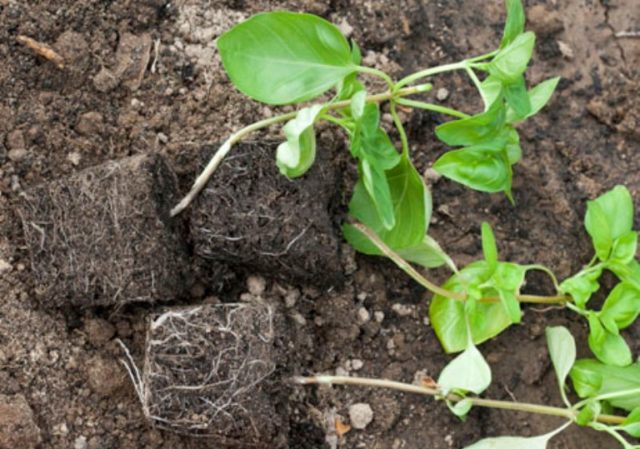

The scheme of planting basil in the garden - between plants 30 cm, in rows 40 cm. Varieties that form large bushes should be placed more freely. The same applies to plants that are not planned to be cut to obtain fragrant greens - basil intended for drying is overgrown with a large number of side branches and takes up a lot of space.
Further care
The first time after transplanting into the ground, basil seedlings are often watered, only with warm water. But it is better not to allow waterlogging - the culture does not like this and is prone to rotting of the stem. It is better to alternate watering with loosening - this way the moisture remains in the soil, the roots breathe, and the weeds grow less.
Direct sowing
In addition to preliminary preparation, it is important to ensure proper fit and follow-up care. Only this will give an excellent result. The following sequence of actions must be observed:
- A thick layer of drainage is poured into the bottom of each container.
- Lay out the soil.
- Seeds are poured over the surface, trying to do this as rarely as possible. You can plant seeds in individual cups using a wooden stick dipped in water. If the container is a common box, then you need to take the seeds in your fingers with a pinch and sow them as rarely as possible.
- With loosened earth, crush the seeds from above, creating a layer of no more than 0.8 cm above them.
- Sprinkle with water from a spray bottle - the amount of moisture is abundant enough.
- The containers are covered with foil or glass and placed in appropriate conditions for germination and further green mass gains.
When to sow basil seedlings in 2019: optimal timing
When to plant basil seeds for seedlings, in what month? Optimal averaged the timing of planting basil seeds for seedlings is March, April.
But keep in mind that you should plant seedlings in open ground at the age of about 2 months.
The sowing time should be chosen based on the period when plants can be planted in open ground. The fact is that this plant is thermophilic, so the seedlings need to be transplanted when optimal weather conditions come, the threat of recurrent night frosts passes.
When choosing the right time for planting basil seedlings, you should take into account the climatic conditions of different regions:
- in the Middle zone (including the Moscow region) and the Volga region - can be planted in early April (planted in open ground in the second half of May);
- in the southern regions - in early March (landing at a permanent place in early May);
- in Siberia, in the Urals, in the Leningrad region - it is better to sow in mid-April (transplant seedlings in open ground in early June).
By the way, sowing according to the lunar calendar would be a good idea. Suitable dates for planting basil seedlings in 2019:
- Auspicious days:
- in March - 8, 9, 10, 11, 12, 15, 16, 17, 27, 28, 29,
- in April - 6, 7, 8, 9, 10, 11, 12, 13, 15, 16, 17, 18, 24, 25, 26, 29, 30.
- Unfavorable days:
- in March - 6, 7, 21,
- in April - 5, 19.
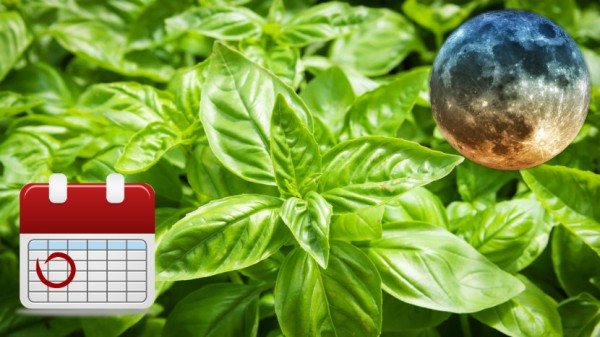

Tips from experienced gardeners
When planting seedlings in a permanent place or sowing seeds, you should choose a place based on the rules of crop rotation. It is best to plant greens in the place where tomatoes, potatoes, peas or beans grew.
It is very good to plant basil between vegetable beds. Its specific smell repels pests.
Basil is very easy to grow. However, in order to get a good harvest, it must be regularly watered, weeded and fed with nitrogen fertilizers.
Peduncles that appear on plants should be cut off. So the yield will be higher.
Step-by-step instructions for planting basil seedlings
To grow good seedlings, which will then take root well in the soil and amaze with their magnificent appearance and taste, you must initially properly plant basil seeds on seedlings at home.
Selection and preparation of seeds
A simple but important trick will help you choose a good and high-quality planting material - Buy basil seeds from trusted stores and points of sale with good reviews and trusted producers.
What seed is best not to buy? The one that has damaged, crumpled, dirty packaging (perhaps the goods were stored incorrectly and the germination rate will decrease because of this), as well as suspiciously cheap goods.
Basil seeds are quite large, so sowing them is very simple:
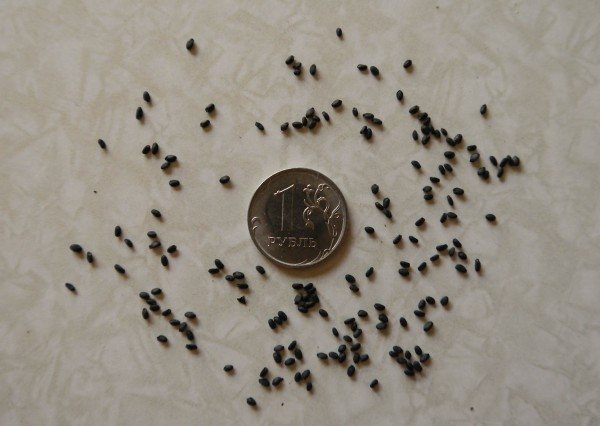

Basil seeds germinate well and without pre-sowing treatment. But, if you want to get faster and more friendly shoots, you can process them in a growth stimulator, for example, in "Epine-Extra", "Zircon"... You need to soak the seeds according to the instructions on the package.
As you can see in the photo, basil seeds swell when soaked and look very interesting:
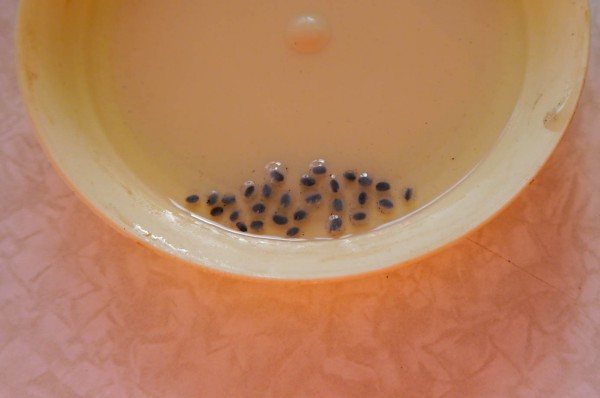

Soil preparation
For the most successful growing of basil seedlings at home, you should choose a suitable substrate. The culture prefers fertile, loose, light, air and permeable soil.
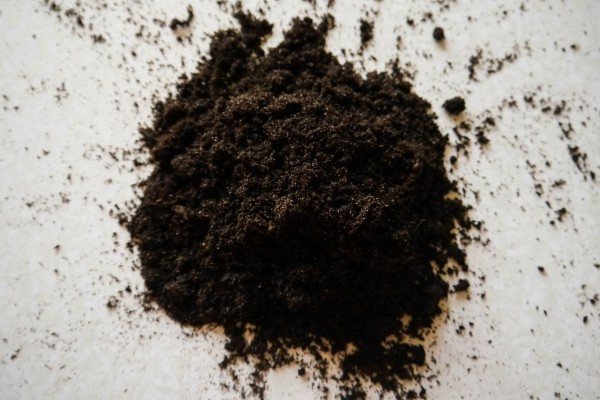

You can plant seeds in purchased soil, it will do universal soil for vegetable seedlings... Or you can cook it yourself.
If you want to cook the earth at home with your own hands, then you should mix the following ingredients in equal proportions:
Or you can make a potting mix according to the following recipe:
Advice! Before sowing, it is recommended to disinfect the soil for growing basil seedlings, so you will neutralize pathogens and unfavorable microflora. Here tells about the methods of disinfecting the earth.
And then it is recommended sift it through a sieve or sieve with large holes.
Choice of capacity
If you do not plan and do not want to dive seedlings, then you can plant basil seeds in volumetric single containers, eg, peat tablets, pots, plastic cups. Their volume is 0.5 liters. You can sow into smaller cups (0.2 l), and then also dive into larger ones.
Or you can sow basil in a common container - a wooden or plastic box, some kind of bowl. For a denser planting, a subsequent pick will be required. But if the container is initially chosen deep and wide and a large distance (7-10 centimeters) is observed between the seeds, then you can do without a pick.
By the way! IN this article
provides more complete information about which containers you can plant a culture in, about their pros and cons.
Direct sowing
Consider the detailed instructions for planting basil seeds for seedlings at home with step-by-step photos that describe all the stages:
Step 1: Create a drain.
Place a 1-1.5 centimeter thick layer of drainage on the bottom of the planting container. It will eliminate stagnant moisture, which basil does not like very much. You can use perlite, broken brick, expanded clay (as in the photo below):
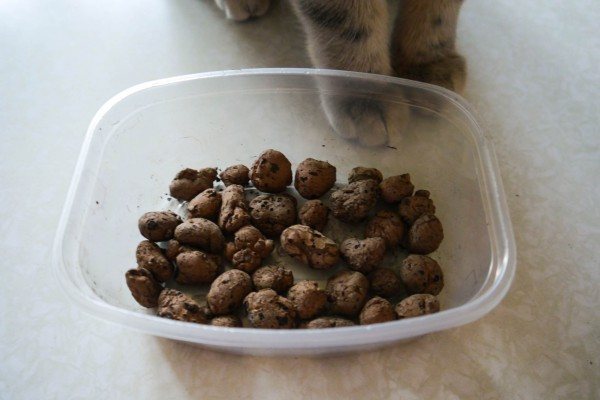

Step 2: Fill the container with soil.
Leave a small distance between the edges of the container and the ground.
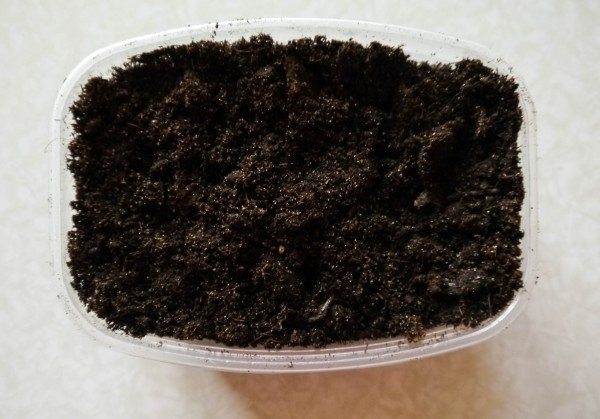

Smooth the surfaces and compact very lightly by hand.
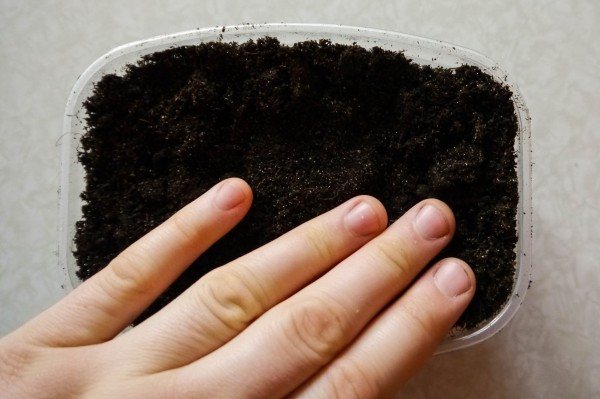

Step 3: Watering the soil.
Moisten the soil with a spray bottle with warm, clean water.
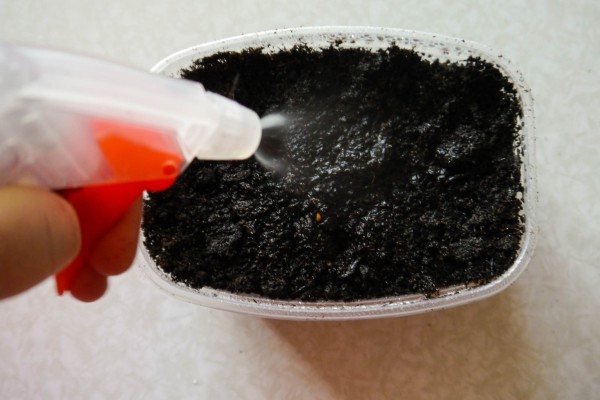

Step 4: Direct sowing of basil seedlings.
When sowing seeds in a common box or bowl, it is practical to sow them in the grooves.
To do this, make grooves (very convenient with a ruler). The depth of the rows is 5 millimeters, the distance between them is 3 centimeters (if you have a large capacity, you can increase the distance to 5-7 cm).
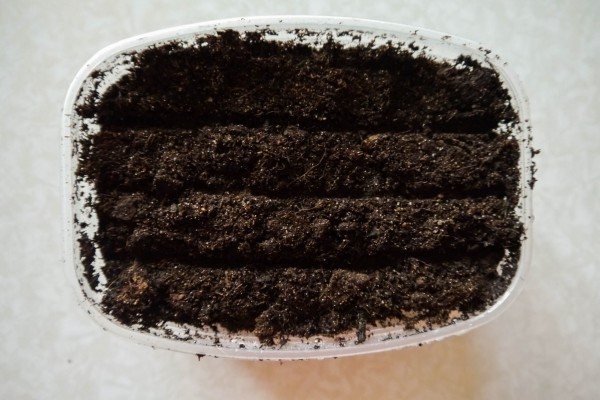

Spread the seeds over the surface, the distance between the seeds is 3 centimeters (if you have a wide box, then plant with an interval of 5-7 cm).
Can be planted with your fingers.
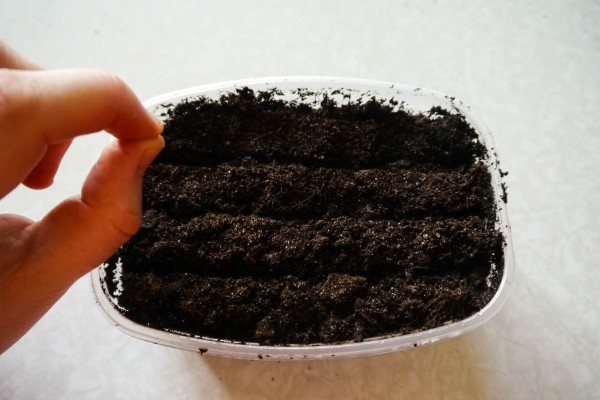

Or you can use tweezers.
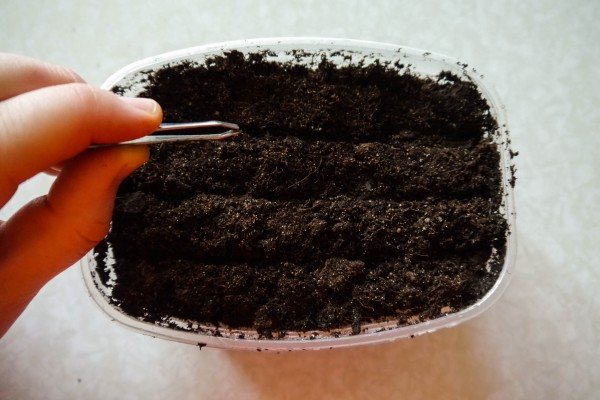

Plant basil seedlings in individual containers you need the following (in the photo there are plastic cassettes):
Make a depression with your finger or a pencil, depth - 3-5 millimeters, no more.
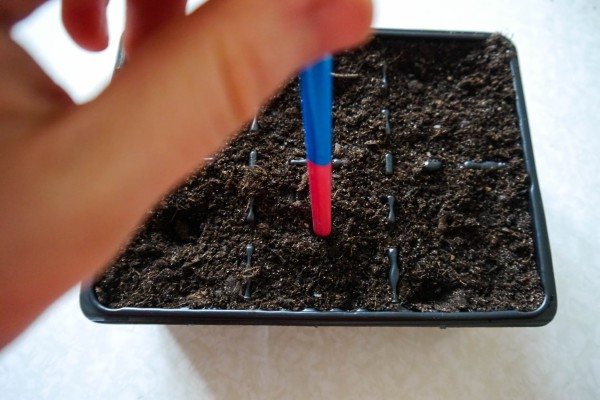

Sow two seeds in one hole. You can also do this with your hands or tweezers.
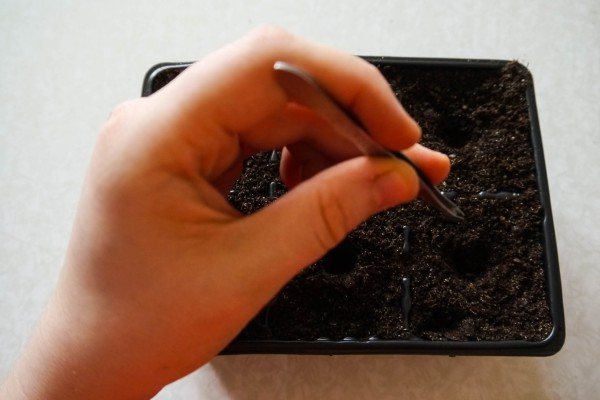

Step 5: Cover the seeds with soil.
Now you should sprinkle the seeds in the depression with earth. Layer - 0.5 centimeters (but no more).
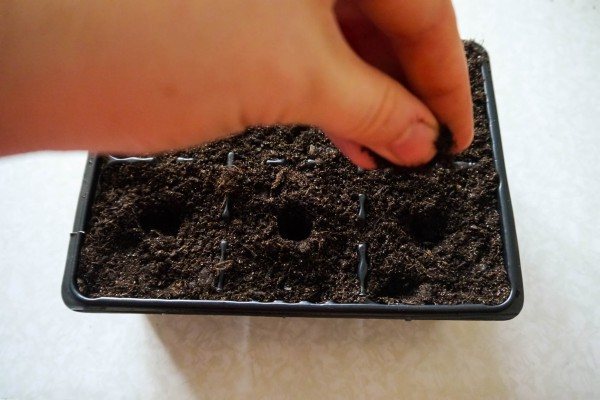

Step 6: Watering after sowing.
The soil with seeds should be moistened exclusively with a spray bottle; water can be used only with settled, clean, room temperature.
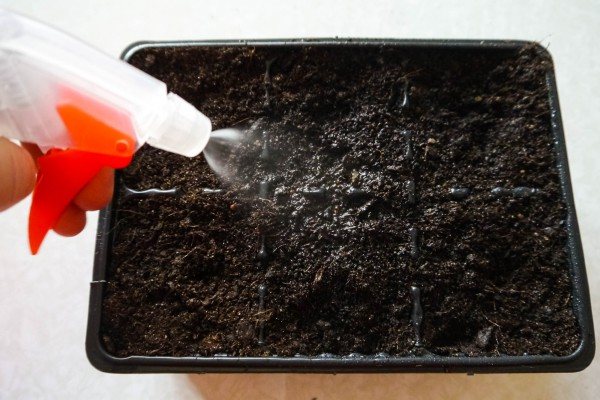

Step 7: Create a mini greenhouse.
A greenhouse is needed to create optimal conditions for seed germination. To do this, cover the container with glass, lid, film.
And then put it in a dark and warm room with a temperature of 23-24 degrees Celsius.
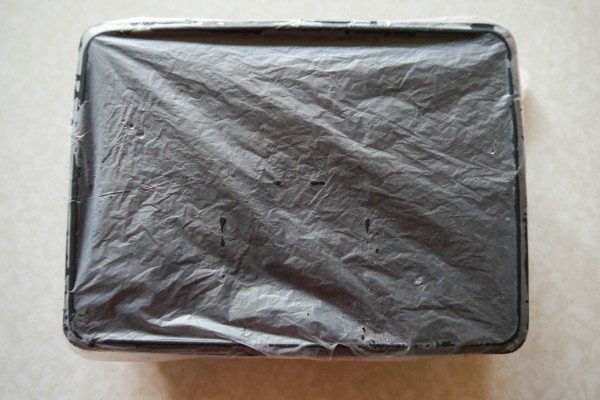

Step 8: Label the seedlings somehow.
For example, attach a sticker.
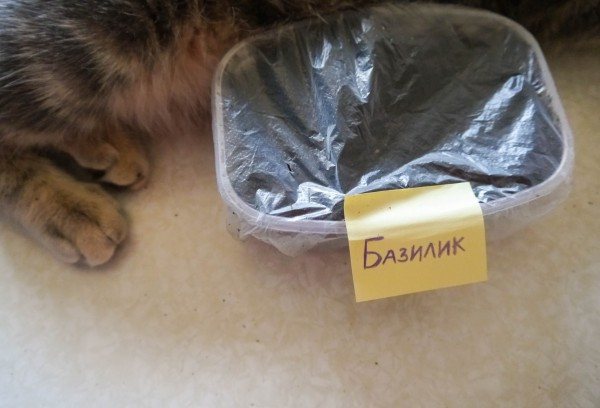

Video: sowing basil seeds for seedlings in plastic cassettes.
Capacity and drainage
Each gardener will choose the most convenient container for himself, growing basil seedlings. It can be:
- Peat cups or tablets.
- Plastic cups.
- In a snail.
From plastic containers and from a snail, it will be necessary to pick young plants, and this may not have the best effect on the state of the plant itself.
Please note that there must be a sufficient drainage layer at the bottom of each container. This will provide a sufficiently intensive passage of moisture through the soil and exclude its stagnation and negative impact on the root system of the basil.
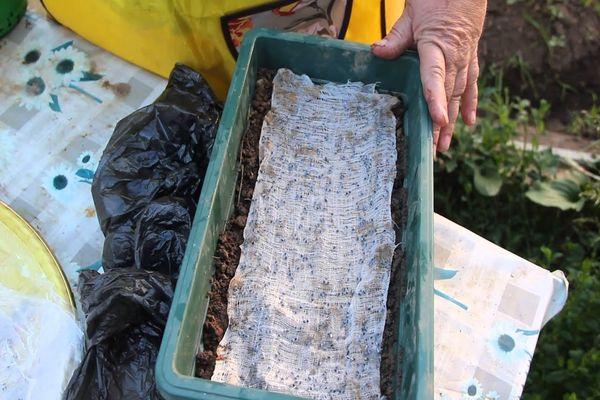

Basil seedlings care rules
Correct and complete care is a guarantee of friendly seedlings and strong, healthy, strong seedlings.Of course, the culture cannot be called very whimsical, but it has its own agronomic "rider" that must be performed. Do not forget that heat-loving plants of this culture are very sensitive to moisture and heat.
So, you need to properly care for basil seedlings as follows:
- Maintain the temperature until the emergence of shoots 24-23 degrees Celsius (at a lower t, the seedlings will germinate longer), and after they appear, in order to avoid stretching, the temperature regime drops to 20 degrees Celsius - during the day, 18 - at night (but not lower than 18, basil loves warmth).
- To maintain the optimum humidity level, ventilate the container for 20 minutes every day by removing the lid, glass or film. If you find condensation on the covering material, be sure to wipe it off. After the emergence of shoots, you need to disassemble the greenhouse.
With proper care, the first shoots will appear in about 7-10 days.
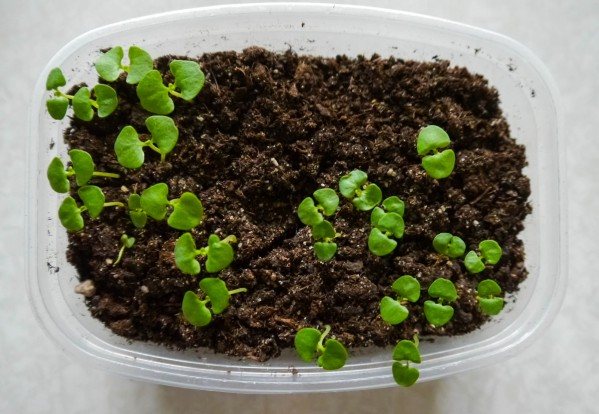

- After emergence, it is important to provide the plants with adequate lighting. A south or southwest window sill is ideal. The recommended duration of daylight hours for growing basil seedlings at home is 12-14 hours, so it is better to supplement it with phytolamps.
- Be careful about watering! Use only settled, clean water at room temperature, not from the tap. Before the emergence of shoots, it is better to moisten from a spray bottle, and then with a syringe or syringe. It is necessary to maintain a moderate soil moisture (it is impossible to overflow and allow the soil to dry out!). If you have formed excess water in the pan, then you need to pour it out from there.
How and when to dive basil seedlings
Basil seedlings tolerate picking well, so you don't have to worry about the well-being of the plants. The optimal timing of the procedure must be determined by the plants themselves - seedlings should have 2 true leaves.
The soil for the procedure can be used the same as for planting. But you can mix 1 tbsp. l. mineral fertilizer or 2 tbsp. l. wood ash per five liters of potting soil.
You need to correctly dive basil seedlings according to the following scheme:
- water the plants a couple of hours before the procedure;
- fill containers with soil, slightly compact;
- make a hole in the middle with your finger;
- carefully pick up the seedling and transfer it along with a clod of earth into the recess;
- cover the hole with earth and carefully compact the soil around;
- water.
Important! Plants must not be buried when diving, they must remain at the same level as they grew before!
Video: rules for picking basil seedlings.
Leaving after a pick:
- A couple of weeks after the procedure, when the plants adapt and take root, you can feed it with a mineral complex fertilizer, including nitrogen, potassium and phosphorus in equal proportions. Before planting in open ground, you still need to feed it once every 14 days.
- After the seedling has 5-6 true leaves, it is recommended to pinch, which will slow down growth and help avoid overgrowing the seedlings, stimulate the growth of lateral shoots.
- 2 weeks before planting in the ground, you need to start hardening the seedlings. Plants can be taken out to fresh air only at a temperature of at least 12 degrees Celsius.
Popular varieties of basil
Basil can be purple, green, lemon-colored. And what types and varieties are there?
- Early maturing varieties - ripening period 40-50 days, the most popular varieties of early species are the Pearl of the Moscow Region, Dwarf, Green Aromatic, Clove, Lemon.
- Mid-season - ripen in 60-70 days, the following medium varieties are popular: Vanilla aroma, Caramel, Moskvoretsky, Orion, Charodey.
- Late ripening - 80-90 days, late varieties: Fantasy, Zastolny, Moorish, Marquis, Sharm.
If you follow all the rules and recommendations, then you can easily grow basil seedlings at home.The result will pay off - the plants can be admired, spiced and used in food preparation.
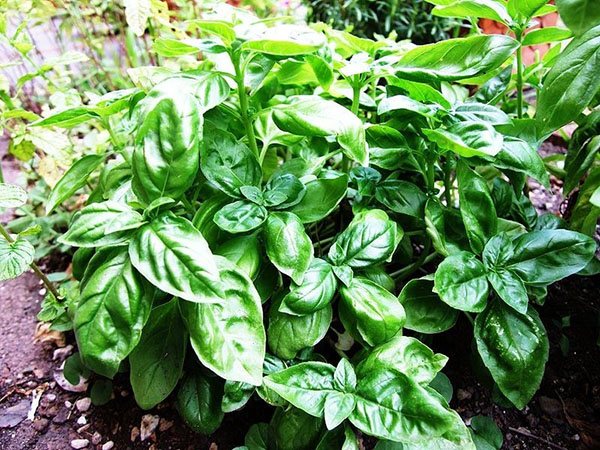

Basil is one of the most beloved and popular spices that came to us from distant India. Despite the fact that the homeland of the plant is a country with a warm climate, it can be grown in almost any region. In the southern regions, the spice can be sown directly into open ground, while in the northern and middle lane, it can be planted with seedlings. Growing from seeds, as well as caring for a plant, is quite simple. Let's figure out how basil is planted for seedlings at home.
Types of seedling basil
- A large-leaved plant, characterized by branching and significant growth. Adult specimens can exceed 40 cm in height. Large-leaved basil has a subtle allspice aroma.
- Spoon-shaped, resembling a classic spoon.
- Small-leaved species with small leaves, short stature. The miniature form of the plant allows it to be grown on a windowsill in a tub.
- A bunchy variety, characterized by a spherical shape of bushes no more than 15 cm high. This is a universal type: bunch basil can be grown both indoors and outdoors.
Description of culture
Basil is known and loved by many for its spicy taste and bright aroma. It grows as a lush bush of medium size, sometimes reaching almost a meter in height. Being a southern plant, it loves warmth and sun, and does not tolerate cold weather. Loose soil with good drainage properties is best suited for planting so that water does not stagnate. Optimally - black soil and suspensions.
Basil grown in Russia is an annual plant. Its root system does not lie deep, and the spice, along with the roots, can be easily removed from the garden and transplanted into a pot. Planting basil seedlings at home will not be difficult even for a novice gardener.
Regardless of the type of basil, the time when to plant basil on seedlings is the same: March.
Flowering occurs in August, in place of white or pink small flowers, small black fruits appear later. During flowering, the plant attracts pollinating insects, being a honey plant. Therefore, it is often planted in order to attract them.
Testimonials
Summer residents of the northern regions, when asked how and when to plant basil, share their experience: this greenery can only be grown by seedlings. Sowing in the garden is useless - it does not grow. And one more thing: if you are lucky to take a fresh one with a spine on the market, plant it boldly on the garden bed.
Basil does not like high humidity, because of it fungal diseases can develop: black leg or spotting. To protect it from trouble, sprinkle the soil around each bush with fine sawdust: they will quickly absorb excess moisture. If this is not done and the black leg has struck the young shoots, a solution of copper sulfate will help.
If you follow all the rules and recommendations of cultivation specialists, because they are not so complicated, every summer resident will be able to please his family with fragrant lush greenery.
Planting seeds for seedlings
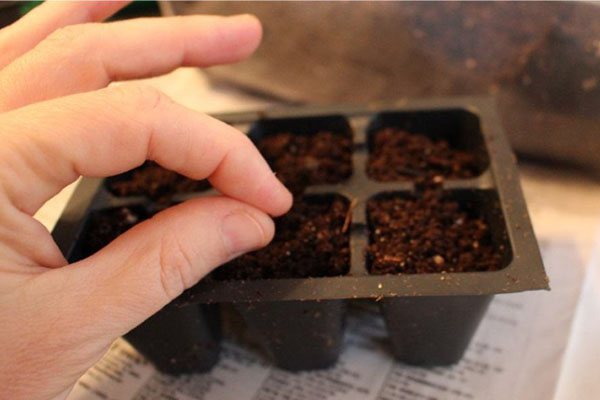

If you want to get strong plants, you need to know how to plant basil seedlings correctly. You need to sow the seeds in the second half of March, two months before planting the plant in the ground. The spice is ready for transplanting to the beds 35-30 days after the shoots have appeared.
Prepare containers for planting seeds, on the bottom of which be sure to place a layer of drainage material. The seeds themselves must be soaked in water for at least three hours before sowing basil for seedlings to remove the essential oil that will prevent them from germinating. Buy a ready-made or make your own earthen mixture for planting basil. It should be loose and consist of:
- rotted compost (2 parts);
- peat (4 parts);
- washed sand (1 part).
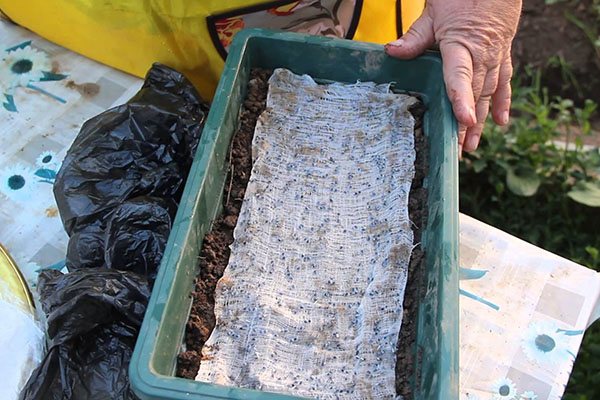

Be sure to sift through the resulting composition.Then steam it in a water bath to destroy fungal spores and weed seeds that may have been in the compost or humus. Store-bought seedling mixture can be spilled with potassium permanganate solution or an antifungal agent such as Fitosporin.
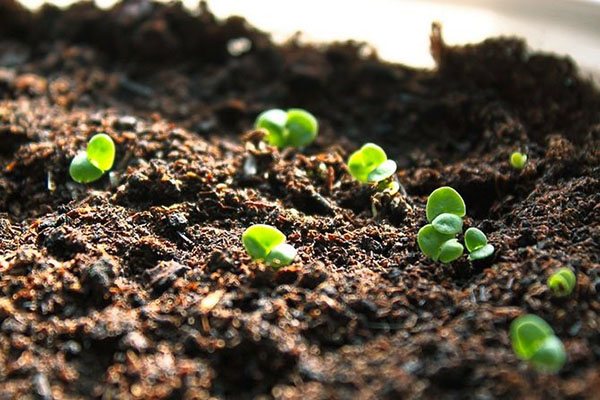

How to plant basil seedlings:
- place the earthen mixture in prepared containers;
- compact it so that a centimeter remains to the edge;
- make small grooves and put seeds in them to a depth of no more than one centimeter;
- again lightly compact the soil on top and water gently.
The seeds should not be on the surface of the soil.
After that, cover the containers with foil, plastic bag or glass and put in a warm, lighted place. This is necessary in order to create a greenhouse effect inside, which will allow the seedlings to appear faster. At this, the sowing of basil for seedlings is completed, now it remains to wait for the shoots.
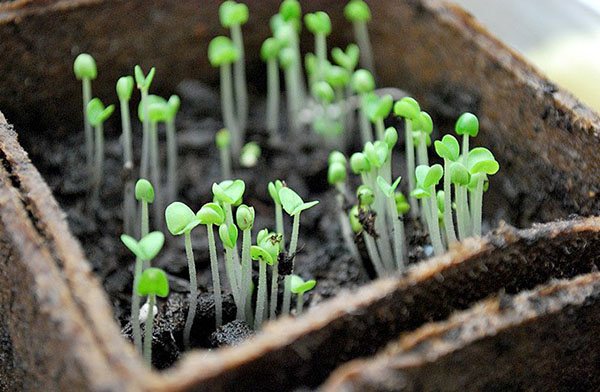

Seed preparation
Whoever plants basil for the first time will have to buy seeds in the store. It is better to choose products of well-known brands - this will guarantee varietal compliance. Then the gardener can collect his own seeds and prepare them for planting next year.
Before planting seedlings, it is necessary to properly prepare the planting material. This is especially important for purchased seeds.
Make a weak solution of pale pink potassium permanganate and soak the basil seeds in it for 15 minutes. After the soaking time has elapsed, you can rinse them with cold boiled water and dry on a napkin.
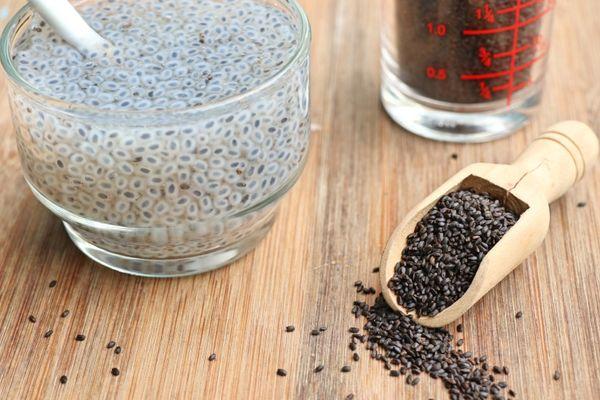

Seedling care and picking
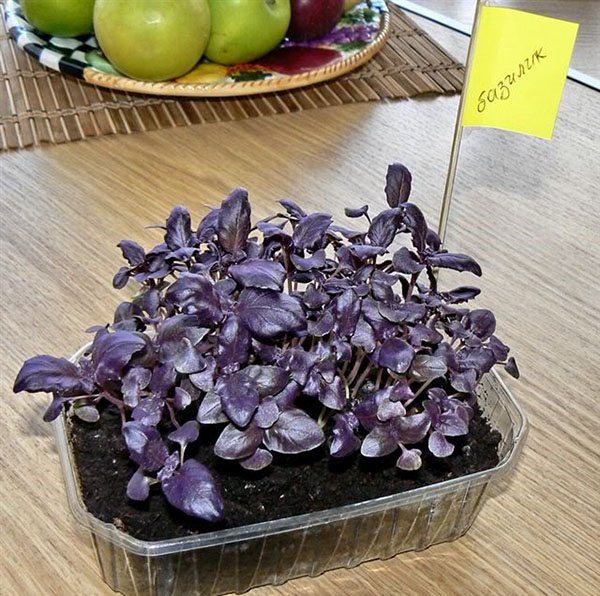

Seedlings emerge after ten days at a temperature of 20-25 degrees. When the basil has risen, the covering material must be removed. In order to prevent young shoots from stretching, basil is grown from seeds for seedlings at a temperature of no more than 20 degrees. Water overmoistening of the soil should not be allowed, the water in the sump after watering should not stagnate. Otherwise, a black leg lesion is likely, due to which all seedlings may die.
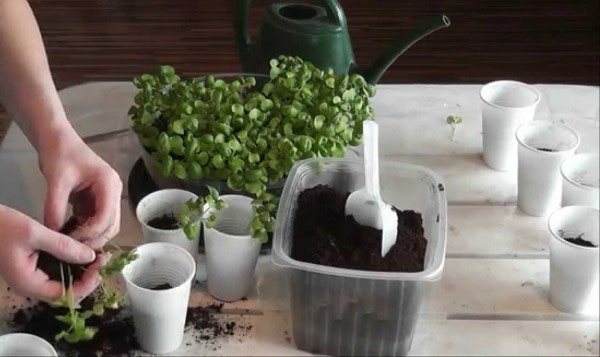

After the basil has a couple of real leaves, you can dive. To do this, use the same mixture as for sowing, with the addition of two tablespoons of ash and a tablespoon of mineral fertilizer per 5 liters of soil. Fill the seedling containers with this composition, make grooves in which you place the seedlings, carefully distributing the roots in the hole. Sprinkle with earth and compact.
The question often arises whether it is possible to deepen the basil when diving. No, this is a mistake, after a dive, the seedlings should remain at the same planting depth as the seedlings.
The main care of the seedlings is regular watering with warm water. When the fifth leaf appears on the seedlings, it is pinched to prevent stretching and provoke the growth of the foliage. Next, the seedlings are regularly watered with warm water until they are planted in open ground. Basil can be planted in the beds as early as May.
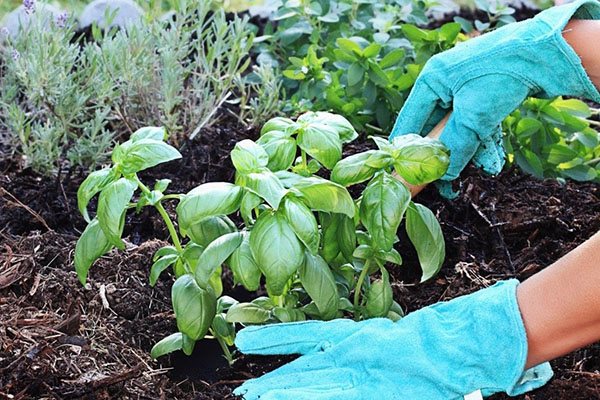

That's all the rules for planting basil seedlings at home, following which you will get strong, healthy seedlings of your favorite spice.

